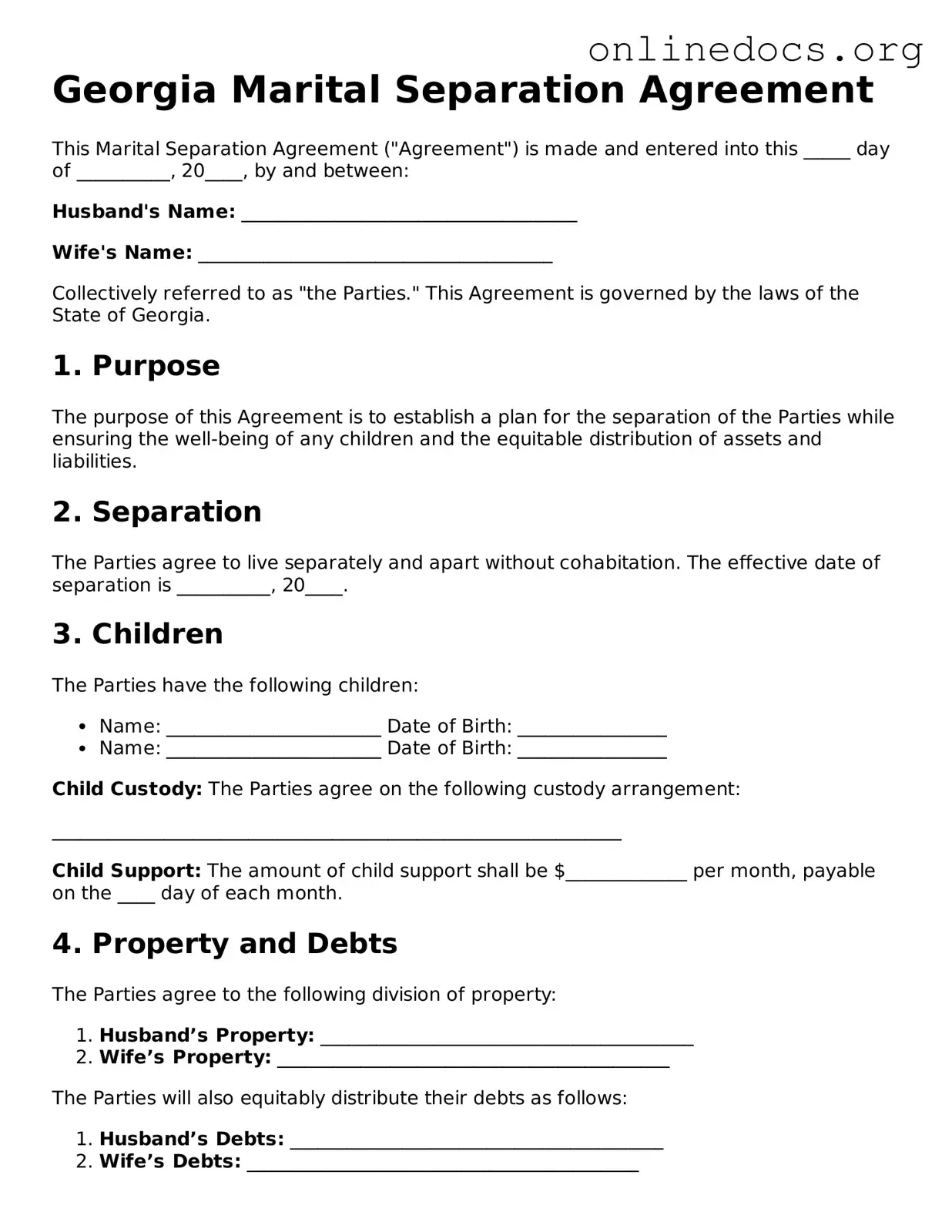Filling out the Georgia Marital Separation Agreement form can be a daunting task. Many individuals overlook critical details that can lead to complications down the line. One common mistake is failing to accurately identify all parties involved. It’s essential to clearly state the full names of both spouses, as any ambiguity can create issues regarding the validity of the agreement.
Another frequent error is neglecting to specify the date of separation. This date is significant because it often determines the division of assets and liabilities. Without a clear date, disputes may arise later, complicating the separation process. It’s crucial to be precise and ensure that both parties agree on this date.
People also often forget to include all relevant financial information. This includes income, debts, and assets. Providing a comprehensive overview of financial circumstances is vital for a fair division of property and responsibilities. If either party omits information, it could lead to misunderstandings or disputes in the future.
Additionally, some individuals fail to address child custody and support arrangements adequately. In Georgia, it’s important to outline these details clearly. Not doing so can result in confusion or conflict later on. Both parents should work together to create a plan that prioritizes the best interests of the children involved.
Another mistake is not considering tax implications. The division of assets can have significant tax consequences, and overlooking these can lead to unexpected financial burdens. Consulting with a financial advisor may be beneficial to ensure that both parties understand the potential tax effects of their agreement.
Moreover, many individuals neglect to have the agreement reviewed by a legal professional. While it may seem tempting to finalize the document without legal input, this can be a costly mistake. A lawyer can provide valuable insights and ensure that the agreement complies with Georgia law, protecting both parties’ interests.
Finally, individuals often forget to sign and date the document properly. This may seem trivial, but without proper signatures, the agreement may not hold up in court. Ensuring that both parties sign and date the form in the presence of a witness can provide additional legal protection and clarity.
